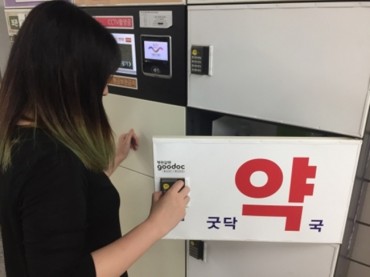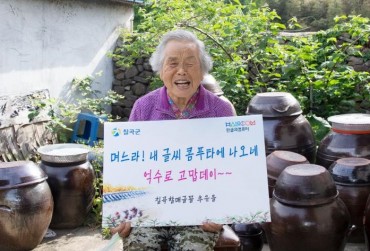
The existence of the Mapo oil storage site, a maximum security facility sitting on the slopes of Mt. Maebong in Seoul, was revealed for the first time in forty years and is now being transformed into a cultural complex. (Image: Yonhap)
SEOUL, Aug. 26 (Korea Bizwire) — The existence of the Mapo oil storage site, a maximum security facility sitting on the slopes of Mt. Maebong in Seoul, was revealed for the first time in forty years and is now being transformed into a cultural complex.
The city of Seoul announced on August 24 that a 47-billion-won project to create a ‘cultural storage site’ that kicked off in January 2013 is nearing completion, and the site will open on September 1.
The Mapo oil storage site was built by the city of Seoul in 1976 to supply oil in times of emergency, after the Korean economy was thrown into turmoil by the oil crisis in 1973.
It was designated as a maximum security facility from the very first day of its construction, with civilian access completely restricted. However, after World Cup Stadium in Sangam was built in the vicinity in November 2000, the site was shut down with a fraction of its space used for a temporary parking lot for the past 17 years.
The area of the new cultural storage site is 1.4 million square meters, which is comparable to the size of 22 soccer fields.
The new facility is seven minutes away on foot from World Cup Stadium station on subway line 6. A 1.3-kilometre trail winds up the slopes of Mt. Maebong, leading to an observation deck that looks down at World Cup Stadium and the Han River.
The cultural storage site is comprised of a culture plaza, where a variety of events such as art performances and marketplaces can take place, and six tanks named T1 to T6.

“These tanks, which in the past were used for storing gasoline, diesel, and bunker C oil, are now being turned into cultural complex facilities,” said a city government official. (Image: Yonhap)
“These tanks, which in the past were used for storing gasoline, diesel, and bunker C oil, are now being turned into cultural complex facilities,” said a city government official. “They are being reconstructed with recycled materials from the old buildings that inhabited the site.”
T1 is a multi-purpose space capable of hosting art performances, exhibitions, and production workshops. It features a glass dome that is reminiscent of the Apple Store in New York.
T2 has been turned into a performance hall and outdoor stage with all of its steel structures removed.
T4 is a cultural complex space capable of hosting media exhibitions, while T5 is now a museum that tells the story of the Mapo oil storage site extending over 40 years and T6 is a communications center with a café, and lecture and conference rooms.
T3, located in the innermost section, is conserved as it was so that visitors can remember what it was like when it was first built.
“This cultural storage site is a model for urban restoration projects and an ecological landmark in the area. A space that has been isolated for 41 years is now being turned into a cultural park that will serve as a public gathering place and help revive the local economy,” said Choi Jong-yoon, the head of the Green City Bureau.
Lina Jang (linajang@koreabizwire.com)






